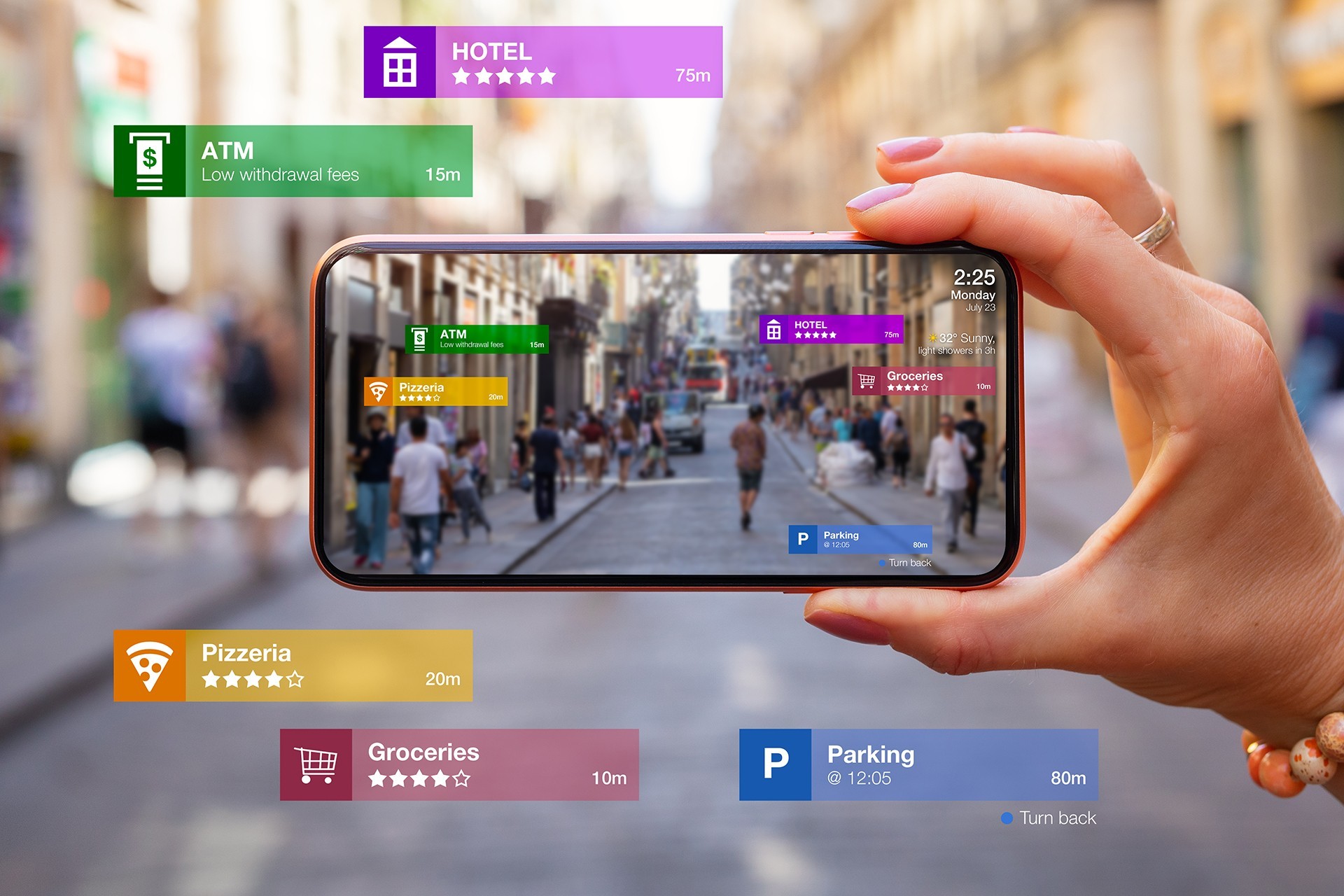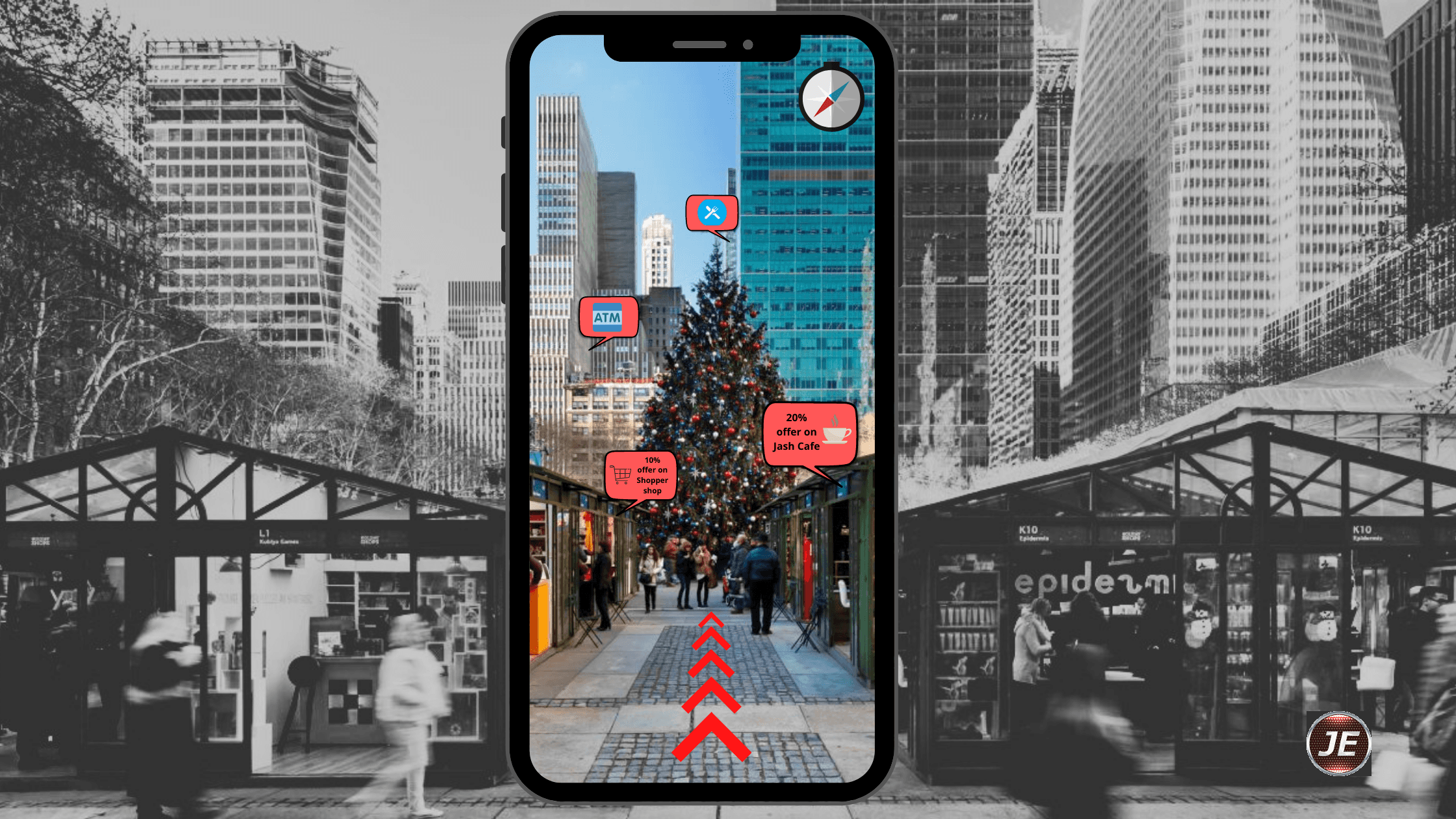Jan 22, 2024
Introduction
Even if the term "location-based augmented reality" is unfamiliar, you've likely encountered applications utilizing this technology. Developers strive to enhance the natural feel of augmented reality experiences, with location identification being a key component.
In applications employing location-based augmented reality, users may find themselves forgetting the underlying technology and instead, feeling as though they carry a touch of magic with them, seamlessly connecting with various objects.
Understanding Location-Based Augmented Reality:
Location-based augmented reality operates without the need for physical markers or identifiers. Diverging from marker-based counterparts in merchandise and advertising, which typically link to specific products or shop locations, location-based technology, also known as markerless, position-based, or geo-based augmented reality, relies on GPS for user location.
Functionality of Location-Based AR:
This technology heavily relies on real-time location systems (RTLS) that pinpoint users' locations through sensors, transferring this information for comparison with points of interest in the external environment. Three crucial elements in creating location-based augmented reality include:
Sensors: Accurate placement of sensors is vital for relaying users' position and movements, forming the backbone of AR apps utilizing location.
Points of Interest: These represent virtual layers in the displayed image, requiring the system to interpret the gathered information correctly and decide what data to present to the user.
Connection Technique: The effectiveness of a markerless application depends on the precision of user location information. The seamless connection of sensors and points of interest is essential for a coherent and efficient augmented reality experience.
Industries Harnessing Location-Based AR:
Various industries leverage location-based AR to enhance user experiences:
Education: Marker-based AR is commonly used, but location-based AR proves advantageous in subjects like astrology or geography.
Marketing and Advertising: Markerless AR applications captivate users by allowing them to interact with augmented content triggered by specific locations.
Construction: AR aids in visualizing final construction products and identifying potential measurement errors.
Real Estate: Location-based AR allows users to view rental property details by simply using their smartphone camera.
Tourism: AR applications assist travelers by providing information on sightseeing places and routes based on their location.
Retail: Markerless augmented reality anchors virtual products in real environments, enabling customers to visualize items in their own spaces.
Gaming and Entertainment: Location-based AR games, such as Pokémon Go, blend virtual elements with real-world locations.
Healthcare: Location-based AR apps, guide users to the nearest automated defibrillator locations.
Developing Location-Based AR Apps: Step-By-Step Guide:
Creating a location-based augmented reality app involves several steps:
Data Preparation: Decide what data to showcase through AR and, for 3D objects or games, choose an appropriate game engine.
Choose Developer's Tool: Select a developer's tool such as AR Kit by Apple, AR Core by Google, or Wikitude based on your app's requirements.
Integrate Geolocation: Incorporate geolocation into the app, ensuring accurate mapping of outdoor locations using services like augmented reality GPS.
Common Challenges in Development:
Development of location-based AR apps can encounter challenges, including:
Uneven Sensor Connections: Incorrectly placed sensors may lead to a disrupted user experience. STEM technology can help track phone position and environment accurately.
Inaccurate Distance Tracking: If the app fails to track the distance accurately, users may experience confusion. Ensure proper GPS functionality.
Misplacement of Points of Interest: Incorrectly placed points of interest may result in distorted object layering on the screen.
Conclusion

AR technology continues to evolve, with companies exploring new features. Investing in AR technology is seen as forward-thinking, with potential applications across various industries.
If considering the development of a location-based AR application, partnering with experts can streamline the process. NXT Interactive offers comprehensive support from planning to development and analysis. For consultation, contact info@nxtinteractive.com




